by Paul Kazlov
The temperatures are dropping and it's time to prepare your living space for the season ahead. Maybe you have already started to do the basic things, such as changing filters and weather sealing windows and doors. Maybe you've also been thinking of taking the next step to upgrade parts of your home. I'd like to offer a few eco-friendly upgrade suggestions that you may want to consider. They can help get you started on saving more energy and lowering your utility bills.
1. Programmable Thermostat
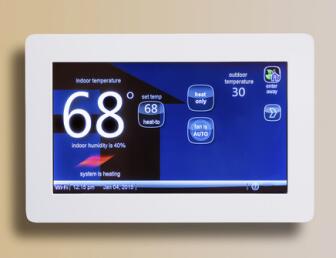 It's sometimes easy to forget to turn the heat down during the day when everyone is away at work and school — though coming home to a cold house is never fun either. So, what do you do? A programmable thermostat takes the guesswork out of everything. You can program it to turn down when you're away at work, and to turn back up before you come home. That way you won't be wasting energy when nobody's home, which means you also won't be throwing money out the window.
It's sometimes easy to forget to turn the heat down during the day when everyone is away at work and school — though coming home to a cold house is never fun either. So, what do you do? A programmable thermostat takes the guesswork out of everything. You can program it to turn down when you're away at work, and to turn back up before you come home. That way you won't be wasting energy when nobody's home, which means you also won't be throwing money out the window.
2. Light Bulbs
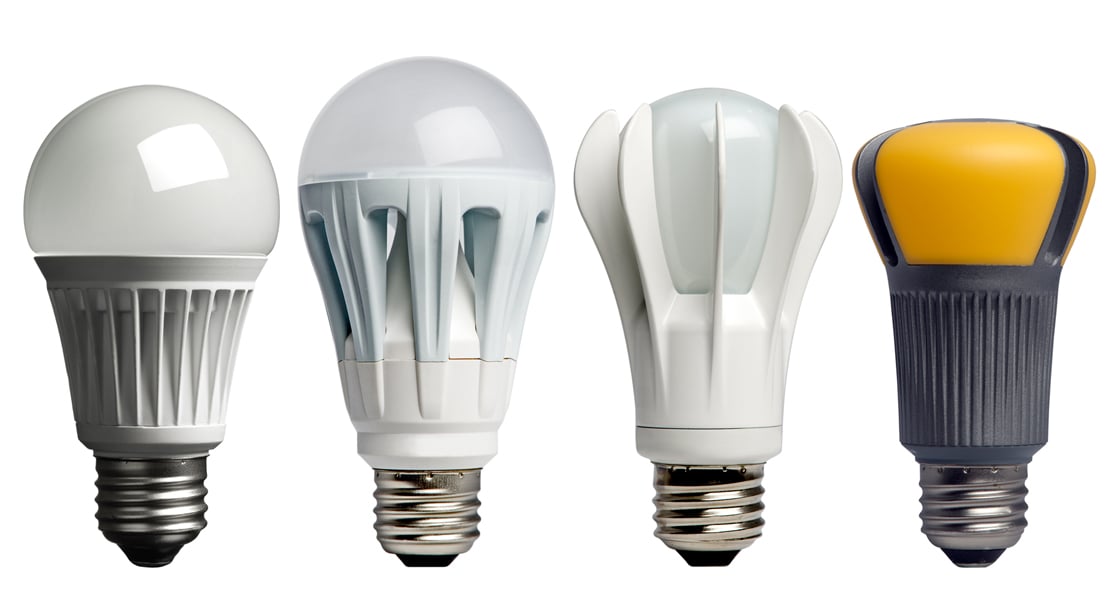 LED light bulbs convert more energy to light than traditional light bulbs, and they also produce less heat while doing so. This translates to big savings on your energy bills — not to mention an LED bulb can last for decades, rather than a few months or a year for a regular bulb. LEDs also do not have the toxic mercury problems associated with compact fluorescent bulbs or CFLs. Although the initial investment for LED bulbs is high, knowing that you will not need to buy another bulb for 20 years or more helps shed some light on why this eco-friendly upgrade is worth the money.
LED light bulbs convert more energy to light than traditional light bulbs, and they also produce less heat while doing so. This translates to big savings on your energy bills — not to mention an LED bulb can last for decades, rather than a few months or a year for a regular bulb. LEDs also do not have the toxic mercury problems associated with compact fluorescent bulbs or CFLs. Although the initial investment for LED bulbs is high, knowing that you will not need to buy another bulb for 20 years or more helps shed some light on why this eco-friendly upgrade is worth the money.
3. Flooring
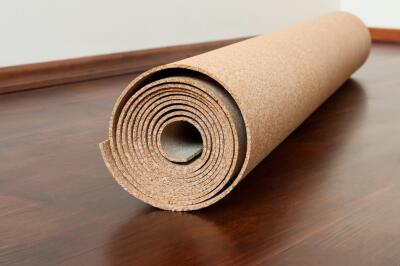 There are so many choices for flooring today. Cork is one option that is gaining in popularity among eco-conscious homeowners. Cork is a sustainable, natural material that comes from trees, yet it doesn't hurt the tree to harvest and doesn't release emissions during manufacturing. It is one of the most popular choices for those seeking to minimize their carbon footprint. It's also a great insulator, so you don't have to worry about your heat escaping through your floors, saving you tons on those pesky winter energy bills. Finally, cork flooring is water resistant and antimicrobial, which makes it a particularly good choice for kitchens and bathrooms. You'll just need to reseal it every few years to ensure optimal performance, but that's a small price to pay for all of the financial and environment-friendly benefits.
There are so many choices for flooring today. Cork is one option that is gaining in popularity among eco-conscious homeowners. Cork is a sustainable, natural material that comes from trees, yet it doesn't hurt the tree to harvest and doesn't release emissions during manufacturing. It is one of the most popular choices for those seeking to minimize their carbon footprint. It's also a great insulator, so you don't have to worry about your heat escaping through your floors, saving you tons on those pesky winter energy bills. Finally, cork flooring is water resistant and antimicrobial, which makes it a particularly good choice for kitchens and bathrooms. You'll just need to reseal it every few years to ensure optimal performance, but that's a small price to pay for all of the financial and environment-friendly benefits.
4. Windows
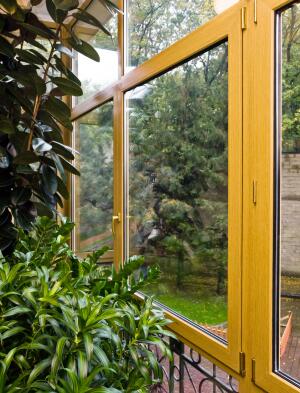 Poorly insulated windows are one of the biggest causes of high energy bills, as air just oozes out of the cracks and panes. If you have metal window frames with single pane glass, you're money could be literally going out the window. By switching out your windows to something like fiberglass with energy-saving glass panes, you'll be making sure the heat actually stays in your home, and the cold air stays outside where it belongs. Fiberglass won't warp or crack in severe temperatures like other materials do, and it also doesn't shrink or expand in the heat and cold. That means cracks won't open up between the windows and the glass panes, preventing air from leaking out. Although fiberglass windows are more expensive than vinyl, metal, or wood, the money you save on your energy bills will more than pay for this investment over time.
Poorly insulated windows are one of the biggest causes of high energy bills, as air just oozes out of the cracks and panes. If you have metal window frames with single pane glass, you're money could be literally going out the window. By switching out your windows to something like fiberglass with energy-saving glass panes, you'll be making sure the heat actually stays in your home, and the cold air stays outside where it belongs. Fiberglass won't warp or crack in severe temperatures like other materials do, and it also doesn't shrink or expand in the heat and cold. That means cracks won't open up between the windows and the glass panes, preventing air from leaking out. Although fiberglass windows are more expensive than vinyl, metal, or wood, the money you save on your energy bills will more than pay for this investment over time.
5. Roofing
A conventional asphalt or wooden shingle roof wears out relatively quickly and is prone to rot, warping, and leaking. There is also the disposal burden to consider. While some companies are beginning to do a better job recycling roofing waste, many still dispose of many tons of old roofing material each year into America's landfills.
Metal roofing, on the other hand, provides superior insulation and it can last for many decades. Because the roof is constructed in large interlocking sheets, you won't have to worry about cracks or leakage, and it's non-combustible in the case of fire or lightning strikes. Finally, as long as you clear off any brush or debris that may accumulate, your metal roof won't rust or corrode, either, and the paint color won't fade.
6. Closets
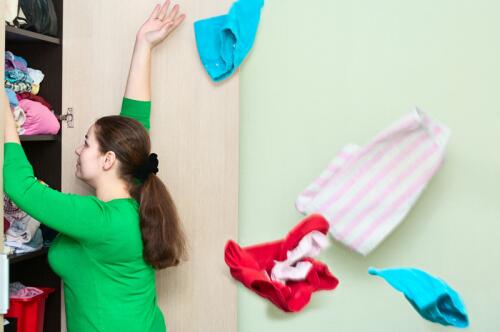 Closets are part of a home's living space and are thus heated and cooled. Fewer closets or smaller closets could mean more energy saved. Coincidentally, the size of the average American home has shrunk by the size of about one closet. Does that mean we have fewer clothes to store? The answer: No!
Closets are part of a home's living space and are thus heated and cooled. Fewer closets or smaller closets could mean more energy saved. Coincidentally, the size of the average American home has shrunk by the size of about one closet. Does that mean we have fewer clothes to store? The answer: No!
Americans are nearly drowning in clothing, consuming more than 20 billion garments per year. You can thus do a lot for the environment and yourself by simply shrinking your closet, or at least shrinking the quantity of stuff that goes in it and responsibly recycling the stuff you no longer want.
These are just a few of the ways you can make changes that will save you dollars while protecting the environment from harmful emissions and greenhouse gasses. Have you made any eco-upgrades to your home lately? Let us know all about it in the comments!
Paul Kazlov is a "green" home remodeling enthusiast and an industry pioneer for innovation in home renovation. Paul writes for the Global Home Improvement blog and strives to educate people about "green" products such as metal roofing and solar. Follow him on Twitter @PaulKazlov
